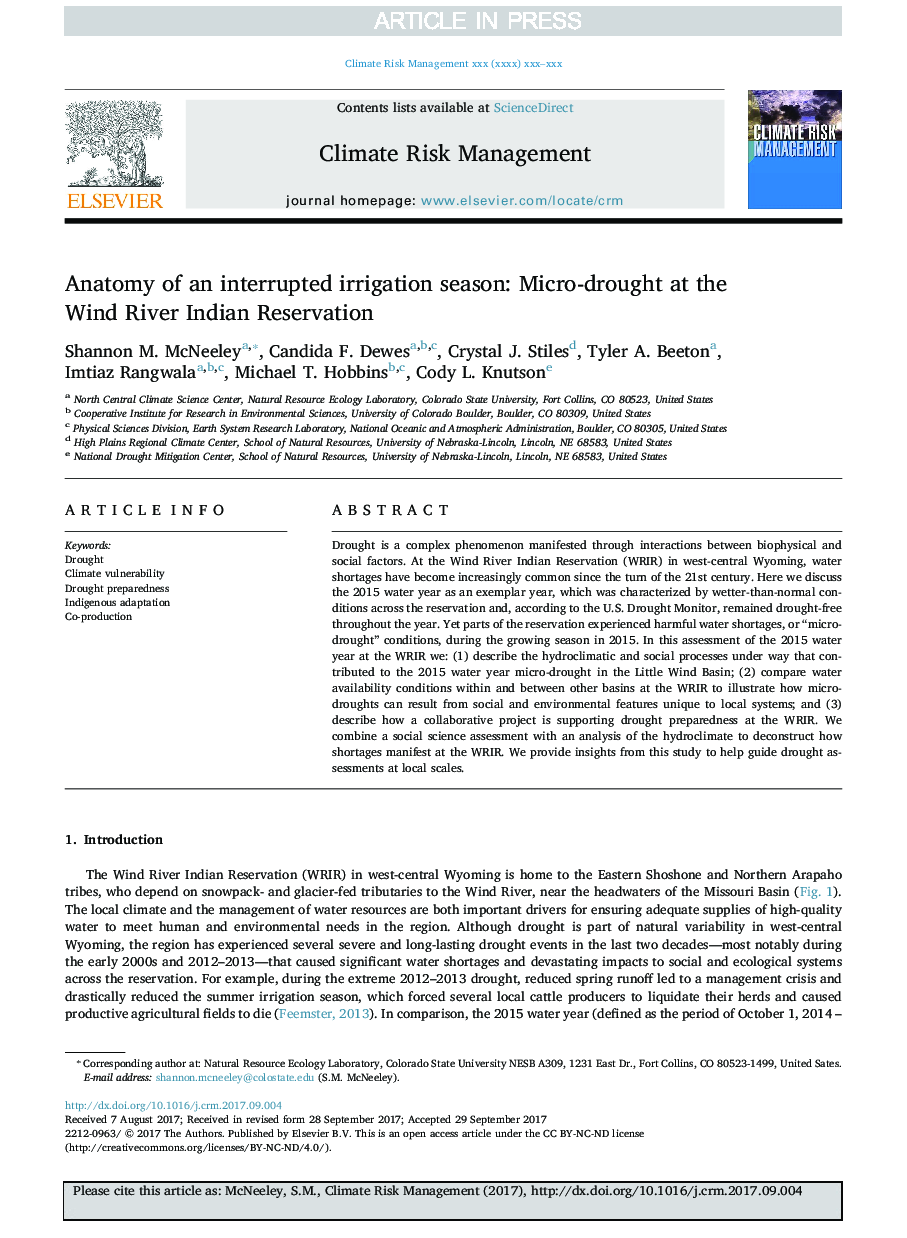| Article ID | Journal | Published Year | Pages | File Type |
|---|---|---|---|---|
| 7462086 | Climate Risk Management | 2018 | 22 Pages |
Abstract
Drought is a complex phenomenon manifested through interactions between biophysical and social factors. At the Wind River Indian Reservation (WRIR) in west-central Wyoming, water shortages have become increasingly common since the turn of the 21st century. Here we discuss the 2015 water year as an exemplar year, which was characterized by wetter-than-normal conditions across the reservation and, according to the U.S. Drought Monitor, remained drought-free throughout the year. Yet parts of the reservation experienced harmful water shortages, or “micro-drought” conditions, during the growing season in 2015. In this assessment of the 2015 water year at the WRIR we: (1) describe the hydroclimatic and social processes under way that contributed to the 2015 water year micro-drought in the Little Wind Basin; (2) compare water availability conditions within and between other basins at the WRIR to illustrate how micro-droughts can result from social and environmental features unique to local systems; and (3) describe how a collaborative project is supporting drought preparedness at the WRIR. We combine a social science assessment with an analysis of the hydroclimate to deconstruct how shortages manifest at the WRIR. We provide insights from this study to help guide drought assessments at local scales.
Related Topics
Physical Sciences and Engineering
Earth and Planetary Sciences
Atmospheric Science
Authors
Shannon M. McNeeley, Candida F. Dewes, Crystal J. Stiles, Tyler A. Beeton, Imtiaz Rangwala, Michael T. Hobbins, Cody L. Knutson,
